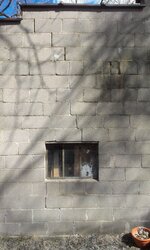P
Pallet Pete
Guest
I have a wall in my garage that has a large crack about 1/4 on the bottom and 1/2" on the top of the wall in a line from the floor up. A previous owner sprayed foam into the crack and pasted concrete over it so now its leaky. It has not grown any larger since purchased the house 6.5 years ago. how do I go about filling the crack ? My idea is to put a board agains the inside or outside and pour mortar or cement in to fill it and then close up the oposite side and let it dry. Does that sound like the right way to fix it ?
Thanks
Pete
Thanks
Pete


